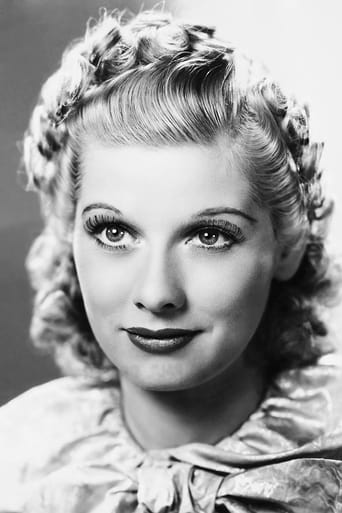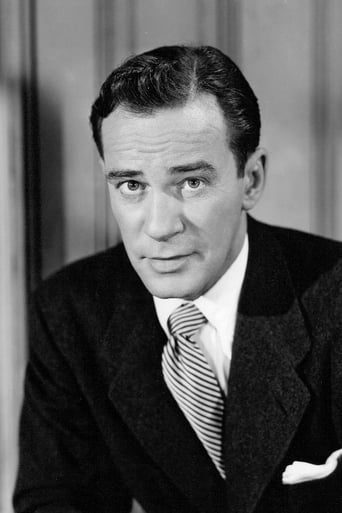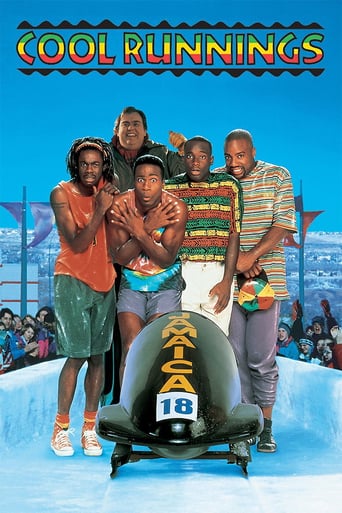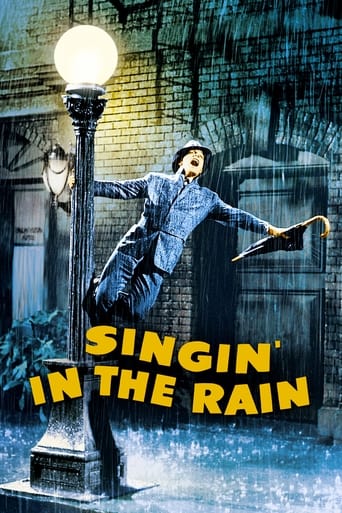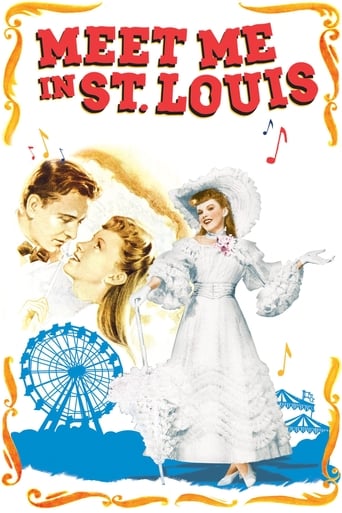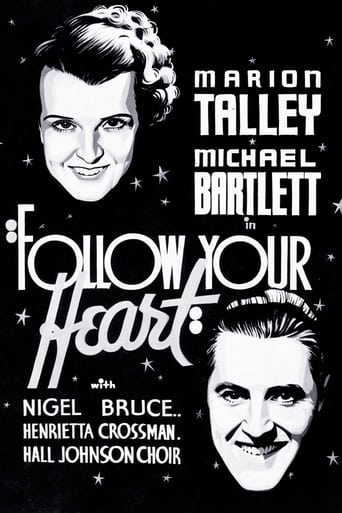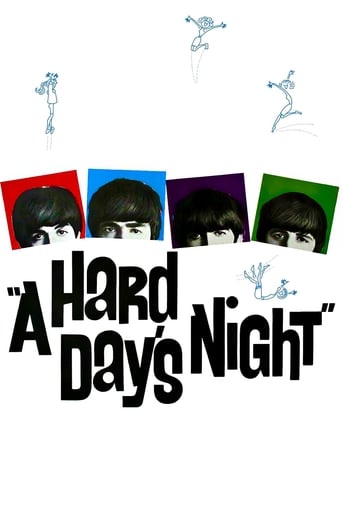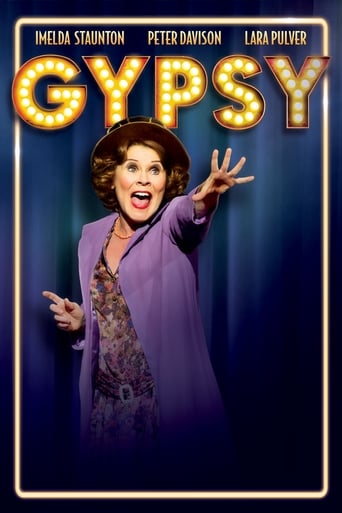
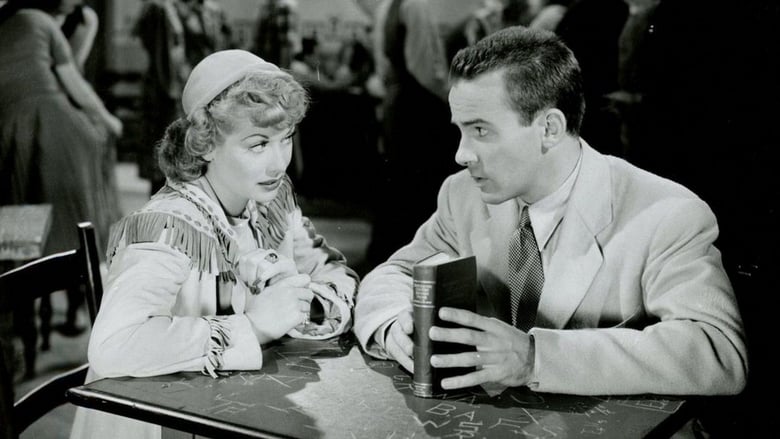
Too Many Girls (1940)
Mr. Casey's daughter, Connie, wants to go to Pottawatomie College and without her knowledge, he sends four football players as her bodyguards. The college is in financial trouble and her bodyguards use their salary to help the college. The football players join the college team, and the team becomes one of the best. One of the football players, Clint, falls in love with Connie, but when she discovers he is her bodyguard, she decides to go back East. The bodyguards follow her, leaving the team in the lurch.
Watch Trailer
Cast
Similar titles
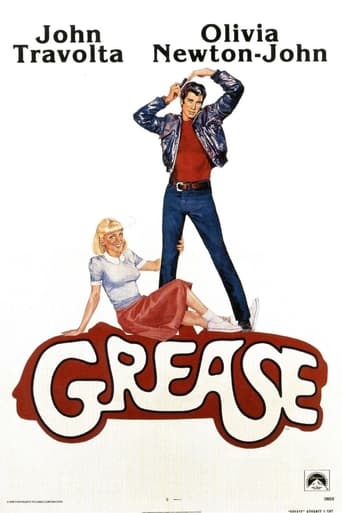

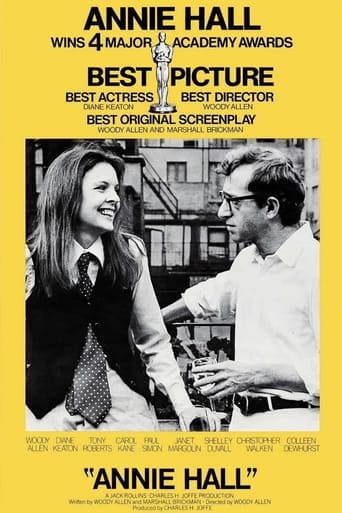
Reviews
Too much of everything
one of my absolute favorites!
Although it has its amusing moments, in eneral the plot does not convince.
Like the great film, it's made with a great deal of visible affection both in front of and behind the camera.
This was a 1930's stage musical put into film, and is significant mostly for the fact that Desi Arnaz and Lucille Ball met for the first time on the set and would later marry and become huge entertainment legends. Also, many stage actors would play their first roles in the movies. Perhaps the stage musical was better, but this movie was a borefest whose performers seem to be going through the motions.The story is about the rebellious daughter of a wealthy businessman who wants to go to her father's alma mater-a small college in New Mexico with financial problems. The father agrees, but secretly hires four young men to enroll with the idea of being her secret bodyguards. The men are football players and join the team. I am making the movie sound more interesting than it was. It had the potential to be entertaining, but it fell completely flat, as if everyone was in a hurry to get everything over with.Notable only for historical interest; not worth watching otherwise. I wondered why they bothered to put it on video.
The flimsy book doesn't help a bit, and Mr. Abbott's inability to translate the stylizations of Broadway to the more naturalistic world of the film pretty much doom this one to pure anthropological significance. Yes, it's the first Lucy-Desi project, even if they have no scenes together and were reportedly unimpressed with each other during the making. So do not look for that Desilu magic, as it was still 10 years in the future. The movie crams together too many genre conventions for its own good: college football pic, zany mix-up, stiff leading man (Richard Carlson!), lost gal drama, fish outta water, south of zee border and worse, it features the dull Francis Langford as chief songbird of lyrics at the edges of the putrid. The dance numbers look like rehearsals for the invasion of Normandy--masses if unskilled, badly co-ordinated extras in clumsy formation-- and for some reason unbilled chorus boy Van Johnson, who can't dance a lick, is in the front row of every single crowd shot. But there are two saving graces. The first is the very young Ann Miller, also 10 years before her glory days at MGM, as Pepe, a racist caricature to be sure but one that can dance. In dark make-up as per cliché, Miller fricassees up a storm, giving a preview of the gifts she was to bring to the Freed unit.. And she's only the second best dancer in the picture! The best is Hal La Roy, and this is his only starring role in a major picture (he is featured in some Vitaphone WB musical shorts, such as "Jitterbut No. 1" but no other movies.) Lord what a talent, and what a crime he never got to do more. Like Gene Nelson of a subsequent generation, he just never got the break his talent warranted. So watch, enjoy and conjure what might have been when he does his loose-legged, spurred solo atop someone's idea of Mexican fountain which is the central architectural feature of Pottowattamie College" in Last Stand, N.M.: What a number, and how did he get those legs not only to bend like that but to bend like that at warp speed? You'll think Industrial Light and Magic computer-generated the number, that's how fast and astonishing it is. Boy, would I have liked to see him in a major film with someone like Hermes Pan or Stanley Donen calling the shots. Too bad and so sad it never happened.
You can't really appreciate the pace and style of the great movie musicals until you've seen some lousy ones like this. A really awful 1930s or 1940s musical movie can induce a sort of restful trance, and take you into another world of stunned tedium. If you know only Rodgers and Hart's great songs which survived shows and became standards, you'll be astounded by how many strained and stupid ones come in between them in the course of a plotted show. The story-scenes are acted in a stiff and disinterested style. Actors seem just to be waiting for others to stop speaking so they can say their lines, rather than actually listening to each other. And why should they listen? What they say is overwritten, repetitious, and yet often indirect and incomplete as far as telling the story is concerned. The plot manages to be both contrived and clumsy, unlikely to the point of being fantastic--yet who would fantasize such dreariness? This effect is probably partly the result of prudish Hollywood trying to adapt a supposedly "spicy" script direct from supposedly "wicked" and "sophisticated" Broadway, and therefore inserting or deleting lines to keep the script "clean" but still leave the impression that it's "daring." But the prudishness seems hypocritical, and the sophistication way, way overestimated. Trying to convey both attitudes, yet neither, the actors become robotic and stressed. And the sets are so stagy that it's a shock when suddenly one scene is played on a real ball-field. Perhaps the most characteristic moment comes when Lucille Ball makes a remark about a boyfriend which is clearly the lead-in for a song, and then, as mechanically as a wind-up toy, while the other actors in the room watch helplessly, with nothing to do, crosses a whole room, goes out onto a porch, hits a position, stares into a light, and lip-syncs woodenly to a voice obviously not hers. Another: after what seems an endless discussion of the troubled finances of a college (which turn out to have nothing to do with the story at all), one boy donates the three hundred dollars (?) that's needed, and the college is opened, at which point for some reason everyone participates in a production number called, "Cakewalk, 'Cause We Got Cake," possibly left over from some other situation in the Broadway original (some of its lyrics seem to relate to Depression optimism), and performed not as a cakewalk, but a swing number. Also, as is to be expected in a "college musical" of the time, the main characters are far past college age, so their sexual coyness seems retarded. The ultimate effect is one of dreamlike slowness and isolation and illogic, making this trivial nonsense seem related to the existential sadness of De Chirico's paintings or Kafka's novels. The movie may be even more bewildering to younger viewers today because of changed social attitudes. A long scene among four boys is oblique to the point of mystery because in 1940 none of them could actually say that certain girls wearing certain "beanie" caps are virgins (there are a couple of incredibly labored attempts later at jokes about these caps). Lucille Ball, giving an old Native American man a letter to carry for her to a lover, calls the messenger, "Boy," and Latino Desi Arnaz not only has an awkward gay joke early in the film, but later performs a song called "I'm Spic and Spanish."
This film was made in 1940. We were just about to go to War with Japan & people had just barely survived the Great Depression. Most people wanted fun escapist movies. The music is great! Of course it's full of fluff. The audience preferred it that way! Ask your grandparents, they'll tell you what life was like in 1940. My grandmother had a job seating people at the Admiral theater in Seattle, Wa. Actually West Seattle, which at the time was considered a separate area from Seattle. She told us that the customers loved Musicals and Westerns. The perfect escape for a Saturday afternoon. The theater's were full for every show and only cost a dime. I think if we were to quit picking apart these films and just enjoy them for the the times they were created, we could learn a lot about life in the 40's. Try to see what we have in common with that era instead of looking for the differences. We are much too cynical and if we can't enjoy a silly film like Too many Girls, we haven't come as far as we think we have. Submitted by Little Blue
